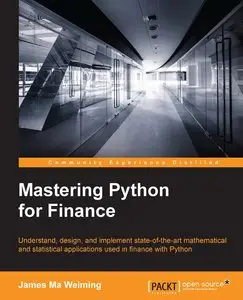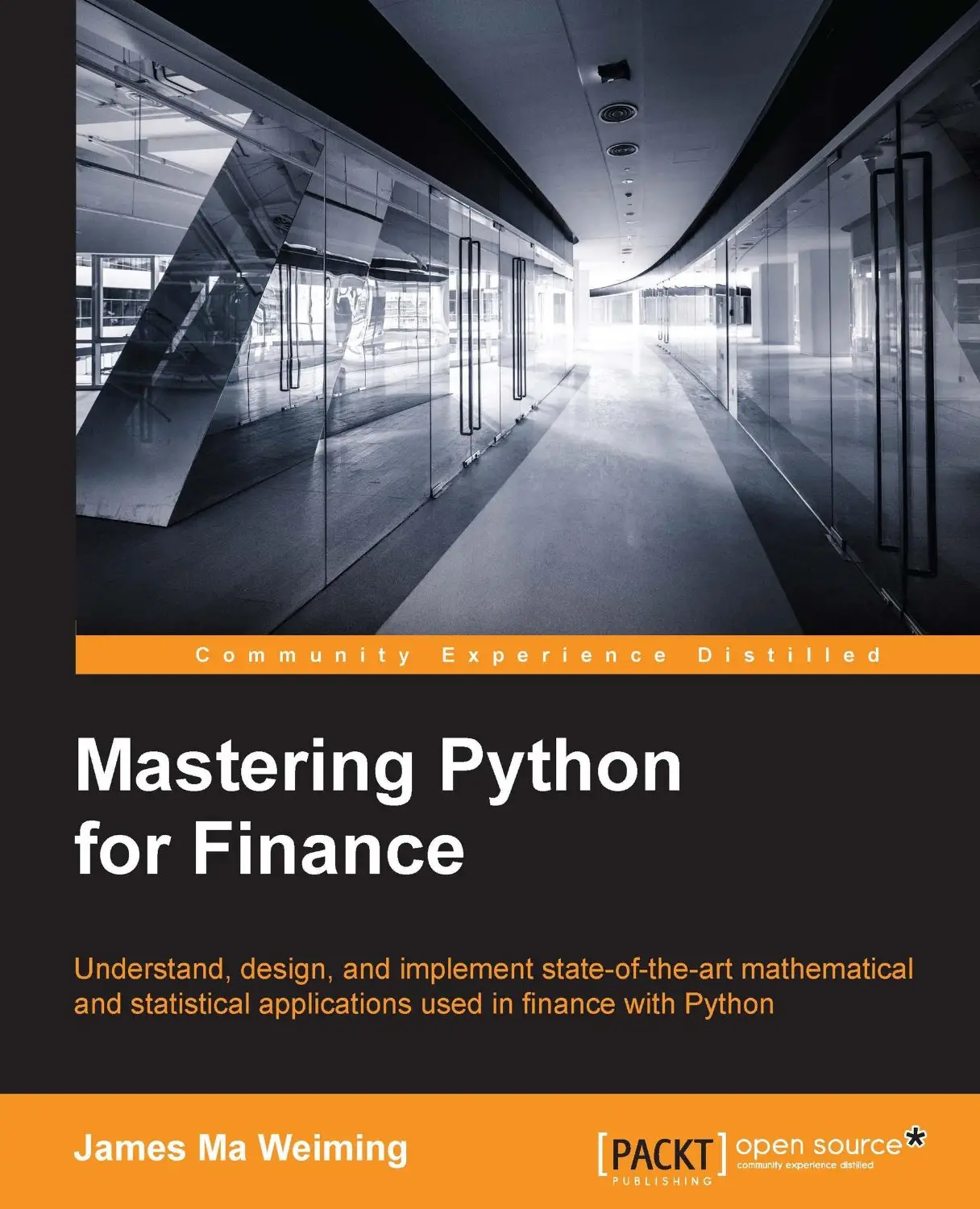Mastering Python for Finance by James Ma Weiming
English | May 29, 2015 | ISBN: 1784394513 | 292 Pages | EPUB/MOBI/PDF (True) | 30.41 MB
English | May 29, 2015 | ISBN: 1784394513 | 292 Pages | EPUB/MOBI/PDF (True) | 30.41 MB
Built initially for scientific computing, Python quickly found its place in finance. Its flexibility and robustness can be easily incorporated into applications for mathematical studies, research, and software development.
Understand, design, and implement state-of-the-art mathematical and statistical applications used in finance with Python
About This Book
Explore financial models used by the industry and ways of solving them with this guide
Discover the various features that Python provides for scientific computing and harness them to enhance your financial applications
Build state-of-the-art infrastructure for critical aspects such as modeling, trading, pricing, and analytics
Who This Book Is For
If you are an undergraduate or graduate student, a beginner to algorithmic development and research, or a software developer in the financial industry who is interested in using Python for quantitative methods in finance, this is the book for you. It would be helpful to have a bit of familiarity with basic Python usage, but no prior experience is required.
What You Will Learn
Perform interactive computing with IPython Notebook
Solve linear equations of financial models and perform ordinary least squares regression
Explore nonlinear modeling and solutions for optimum points using root-finding algorithms and solvers
Discover different types of numerical procedures used in pricing options
Model fixed-income instruments with bonds and interest rates
Manage big data with NoSQL and perform analytics with Hadoop
Build a high-frequency algorithmic trading platform with Python
Create an event-driven backtesting tool and measure your strategies
In Detail
With this book, you will learn about all the tools you need to successfully perform research studies and modeling, improve your trading strategies, and effectively manage risks. You will explore the various tools and techniques used in solving complex problems commonly faced in finance.
You will learn how to price financial instruments such as stocks, options, interest rate derivatives, and futures using computational methods. Also, you will learn how you can perform data analytics on market indexes and use NoSQL to store tick data.



